Braille Satellite 2025: An Extraordinary Exercise in Community
Published July, 2025
by Ola Szkudłapska
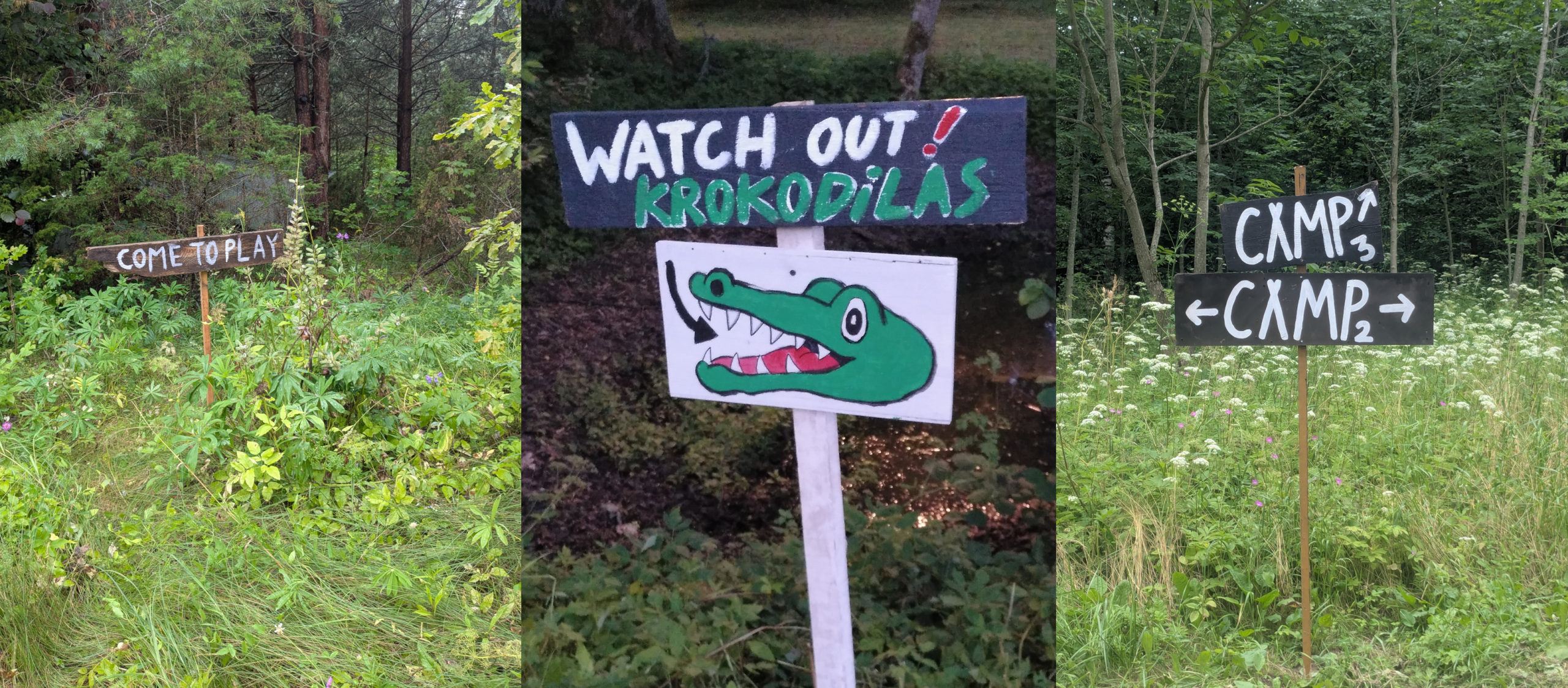
There is an amateur graffiti in Warsaw that reads ‘dear music, thank you’. Two weeks ago, I felt similar gratitude heading to Braille Satellite: a four-day festival taking place in Mushroom Manor, a forest park some 80 kilometres away from Vilnius. Curated and coordinated by Matas Labašauskas and Oscar Olias Castellanos – a Lithuanian/Spanish duo of DJs, diggers and organisers – it annually presents a plethora of outsider musicians, bedroom artists, retro legends and other wonderful weirdos.
The festival is put together without any external sponsors, and the DIY spirit is present all around: from the international crew of volunteers who assemble and then dismantle the three stages and bars to handmade signage guiding you around the site. Another feature is the ‘no headliner’ line-up: all musicians and DJs are listed in the same font size on both the poster and website. Besides, the artists and audience tend to blend into one, as there is no closed-off security area or VIP zone: ‘You just tell them who you are and they feed you’, mused Jimi Tenor, as I escorted him from the main stage to the bar after his show, comparing Braille to more mainstream high-security festivals. Mushroom Manor is different: you dance together, listen together, swim in the pond together or queue for the makeshift shower (that also uses water from the pond – just one of the little quirks Braille is about). The organisers have managed to amass a unique tribe of music makers and enthusiasts, and once you enter the festival site, you’re left to roam and explore at your pace, with no external guidance or interference (as the times of both stages are largely orientational). And if you stumble upon a pop-up intervention in the form of a makeshift moonshine speakeasy in the midst of a thicket of trees, you’ll know what I mean by ‘just Braille things’.
The four Braille days usually pass by like an abstract, beautiful dream, so this review will also ebb and flow around the concepts of order or time. However, Thursday brought an early highlight in the form of Sayonara – a freshly formed trio of Michele Bornati, Martina Terraroli, and Elene Bino, all of them active in various electronic outfits, residents of the Spettro space in Brescia, Italy. Think analogue synthesiser madness backed with cut-up narratives, field recordings, and even a vocoder in one of the tracks. The handful of tapes the band brought with them vanished in a flash, so the fledgling Polish fan club consisting of myself and a friend spent the remainder of the festival trying to track down the remaining copies (with 50% success).
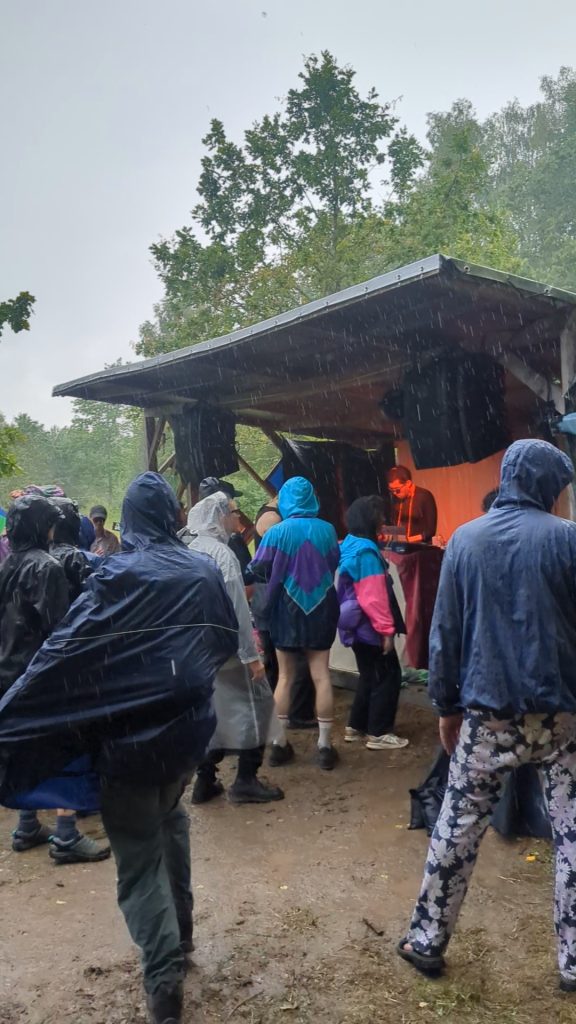
Other highlights from the small stage, branded Musikii, included a strong representation of the Valencian underground in the form of D’Light, Polifeme, and Braille veteran Dr. Truna. Having previously associated the Spanish scene mostly with well-crafted pop, I am constantly amazed at discovering its more hidden gems. What the three acts had in common was a complete disregard of the public’s expectations in terms of rhythm, melody, or volume, in the pursuit of pure sound. D’Light presented an energetic late-night show, using a multitude of electronic devices and everyday objects lined up on a huge table, and coupled with pulsating light. Polifeme gave a hard-hitting drone-noise concert using old radio sets as her main medium. She is a self-taught sound artist who explores radio frequency and various unorthodox methods of creating rhythm and sound. As she stood with her back to the audience, embroiled in smoke, I let my mind wander, pondering on the purifying power of noise. Yet, it was Dr. Truna who really stole my heart: imagine someone who could well be Albert Einstein’s brother busying himself on a stage filled with the most unorthodox concoctions, like something akin a guitar and violin soldered together, with additional rods, not unlike the tentacles of a snail – all of its elements could be played, modified, disassembled, and even turned upside down to produce different sounds altogether.
A similar focus on process, structure, and deconstruction characterised my favourite Lithuanian performance: Simonas Nekrošius, a noise musician notorious for creating elaborate multi-element sound installations that he subsequently destroys during his sets. Equipped with a guitar-like instrument fashioned out of a cross-country ski, he deftly operated his layered structure of lightbulbs, fans, engines, cables, mixers et al, and mesmerised the crowd completely with a mixture of awe and fear (‘won’t he fall?’ ‘does he really want to pierce a hole in the roof?’). Perhaps the complete opposite of his set was the Japanese maverick Yximalloo, who had a minimalist setup featuring a laptop, a microphone, and a torch. But then again, his sweet and primitive lo-fi sounds don’t need much, and the random dancing and clapping added to the nonsense (what else but the unexpected should one expect from an artist so obscure even his own label didn’t know who he was for several years?).
There was also the annual ‘gig you dance to when it suddenly starts raining’: this year it was Kalozin, who started with a dance performance in the centre of the crowd, before moving behind the decks to serve his entrancing broken Brazilian beats. When the clouds began to release hectolitres of water, Braille’s seasoned crowd just took out their raincoats and umbrellas and continued dancing. A similar fate befell Shitty Shed, when she had to abruptly interrupt her show of ‘dactylo-techno’, but as soon as she moved under the Musiikii roof, the analogue gabber party reignited.
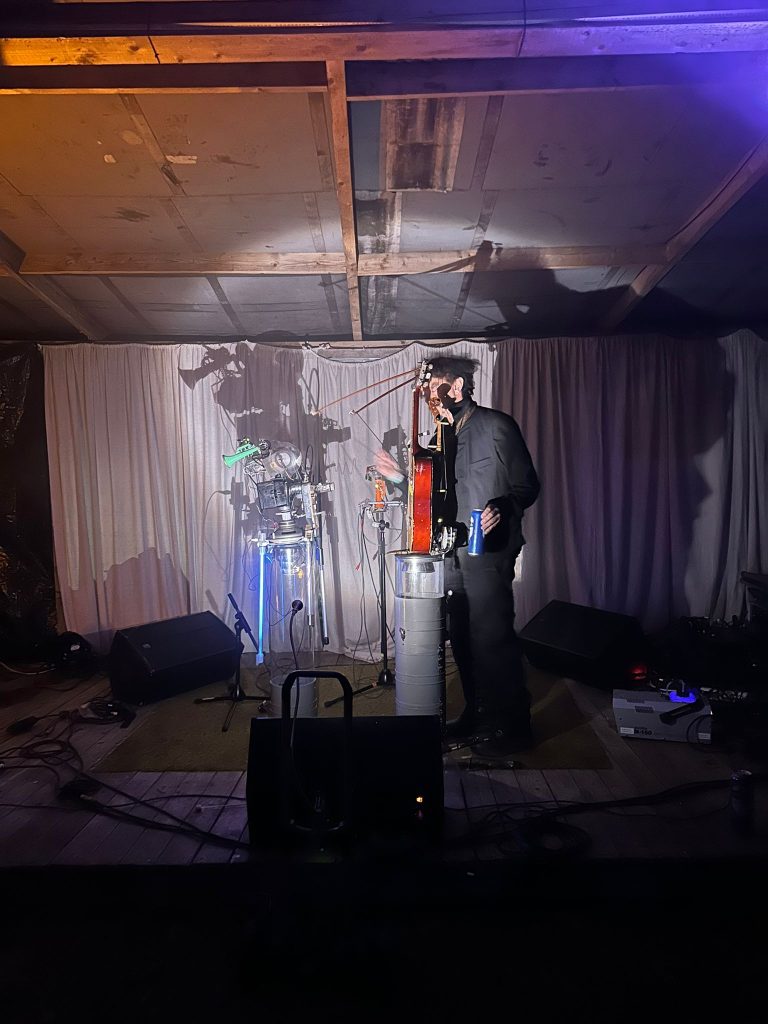
Dr. Truna. Photo by Jara López
At Braille Satellite, the off-kilter alternates with the beautiful, and Saturday’s concert of Passepartout Duo was nothing short of enchanting. Formed by pianist Nicoletta Favari and percussionist Christopher Salvito, they have been on tour pretty much continuously since 2015, showcasing their mindfully built ecosystem of handmade instruments to the world, including the Chromaplane, branded as an ‘instrument for daydreaming’. Facing each other across a table laden with mixers and synthesizers – always tight, always focused – they weaved their gauzy melodies and rhythms, facilitating a collective reverie.
Another of Saturday’s main stage highlights, Don Slepian, quickly scared off my classically trained friends – his set employed so many travesties of classical pieces that they said it brought back all the menial accompaniment jobs they took in the past. However, I sat entranced, quite like the ample dogs in the audience. Slepian – an electronic music pioneer and instrument maker, now in his 70s – delivered a solo synthesiser set that was as entertaining as it was eclectic. The soothing new age sounds morphed into what sounded like entering a church in an Atari game, only to switch to a full-blown revue or a wonky rendition of ‘Ode to Joy’. I revelled in every second of the virtuosity coupled with absurd humour, a sensation only heightened by two guys in the audience engrossed in a chess battle.
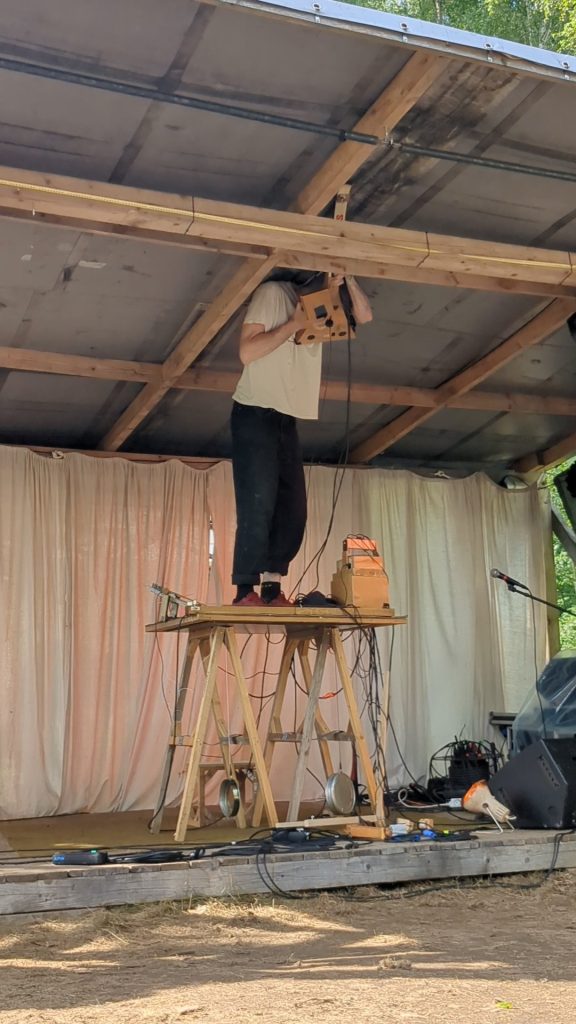
Yet, notwithstanding the dogs roaming freely, the forests and lakes, and everyone around you speaking a mix of Spanish, Lithuanian, English, German, French, and Italian – the one thing that really sets Braille apart from other similar festivals in my eyes is the DJ stage. Populated with vinyl diggers and radio makers, it offers anything but what one would normally expect at a stage meant for dancing. From a 1980s Cameroonian funk-pop banger about a crocodile (whether it was a planned or serendipitous reference to the ‘watch out, krokodilas’ sign, warning about a nearby water-filled pit, remains a mystery), to cumbia, dub, ambient, 70s prog, and even a German boys’ choir – nothing seems out of place there. More often than not, it felt like you were gatecrashing someone’s house party rather than the DJ stage, and you never knew which direction the songs would take. For me, the highlight of each Braille is the set by Octatanz – the DJ alias of Matas and Oscar – which usually occupies the grey area between what is still considered Saturday night and what turns into Sunday morning. It usually outlasts the slot in the programme, too, and features a dazzling selection of vintage vinyl gems or, in their own words, ‘unexpected compositions, rhythmic experiments, catchy travels, undiscovered pop songs, and the whole passion found in an inexhaustible musical subculture’. Despite taking a tactical nap around 4 am, I still overslept – but it was probably the only time in my life I woke up at 7 am to go to a party. At 9, when the set was supposed to end, there was a family photo of everyone present, and the music finally ended sometime past 11 am.
Sunday is usually the wind-down day at Braille, with live music limited to the main and DJ stages. Kim David Bots and Lyckle de Jong kicked off the day with a wonderfully whimsical concert crafted using a ‘clarinet, flute, Kawai k1, PVC tube, organelle, iPad, dog bowls, and samplers’. Particularly sweet was a sampled voice that reminded me of JK Flesh, yet instead of exploring the world’s grim underbelly, it shouted how beautiful Lithuania was and how great he felt there. However, Sunday truly belonged to Florence Adooni and her band. Despite having three full festival days under their belts, the Braille crowd was quick to start dancing and proved more than ready for the Ghanaian high life. The musicians’ energy was contagious, and we were soon singing along – whether vocalising ‘A.O.E.I.U’ (‘An Ordinary Exercise in Unity’), or ‘Uh-Ah’ from the ‘Uh-Ah Song’ (the campsite was filled with echoes of this gig for a good two hours afterwards).
For ‘Vocalise My Luv’, Florence was accompanied onstage by Jimi Tenor, who composed the piece (and joined in the dancing – her band left him no choice). A few hours later, he took to the main stage as well. Having expected him to play a more jazzy set with a band, I was near-ecstatic to see a solo setup on stage. We were truly in for a treat. I am still at a loss how one can simultaneously play the flute and operate a modular synthesiser – perhaps this is a skill exclusive to 60-year-old bespectacled Finns sporting sequin-studded capes. Everything was on-point here, from the humorous take at crooners such as ‘Can’t Stay with you Baby’ (it just doesn’t get old, this track) to glorifying the Chinese space programme (‘Jade Rabbit’), interspersed with playful moaning about AI, as Jimi took time to programme the beats for subsequent tracks. As the set closed with ‘Sugardaddy’, I felt like a teenager again, a perfect completion of my festival experience.
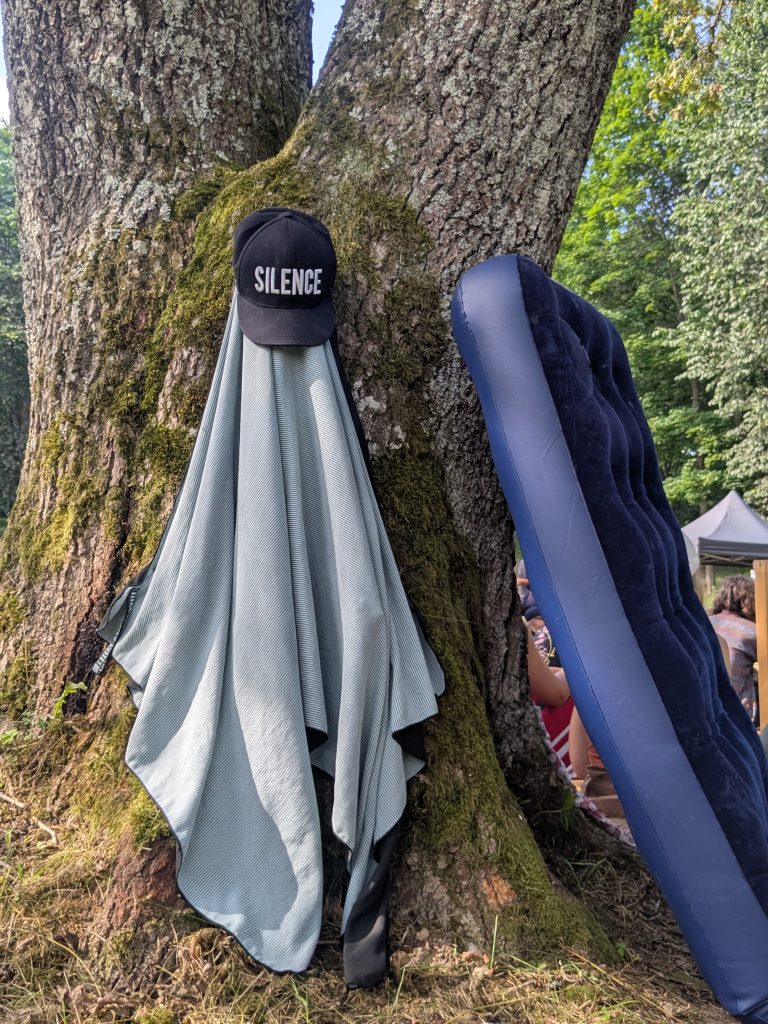
Braille Satellite usually feels like an out-of-time utopia, but this year, even this pristine sanctuary was pierced by echoes of the outside world: be it through the Palestinian flag hanging from the merch kiosk, or Don Slepian’s allusions he might be stripped of U.S. citizenship if he says too much from the stage. But can we really get enough of underlining how music and the arts in general can bring us together and salvage hope? Still, Slepian’s other words are what stuck with me most: having experienced isolation and exclusion in the U.S., in Lithuania, he said he immediately felt welcome in the Braille tribe. This sentiment seemed to echo what Witch’n’Monk, a duo made up of Colombian rebel flautist Mauricio Velasierra and British soprano and guitarist Heidi Heidelberg, said the previous day: comparing the festival to ‘a conference of weirdos’, before quipping that ‘we’re the normal ones, those outside are not’.
This, perhaps, is the essence of Braille Satellite. That no matter how maladjusted to mainstream society you may feel in your daily life, there does exist a space that celebrates all weirdness – and you’re welcome to join it. The entry condition, according to Oscar Olias Castellanos, is the following: ‘You don’t have to know anything, you just need to be open. We don’t have any direction, but all you’re going to see is a manifest of music.’ Today, we’re in dire need of initiatives that bring back the true meaning of words such as ‘creative freedom’ and ‘community’, and – through their sheer existence – support alternative visions of the world.
Text and photos by: Ola Szkudłapska
This article is brought to you as part of the EM GUIDE project – an initiative dedicated to empowering independent music magazines and strengthening the underground music scene in Europe. Read more about the project at emgui.de.
Funded by the European Union. Views and opinions expressed are, however, those of the author(s) only and do not necessarily reflect those of the European Union (EU) or the European Education and Culture Executive Agency (EACEA). Neither the EU nor EACEA can be held responsible for them.